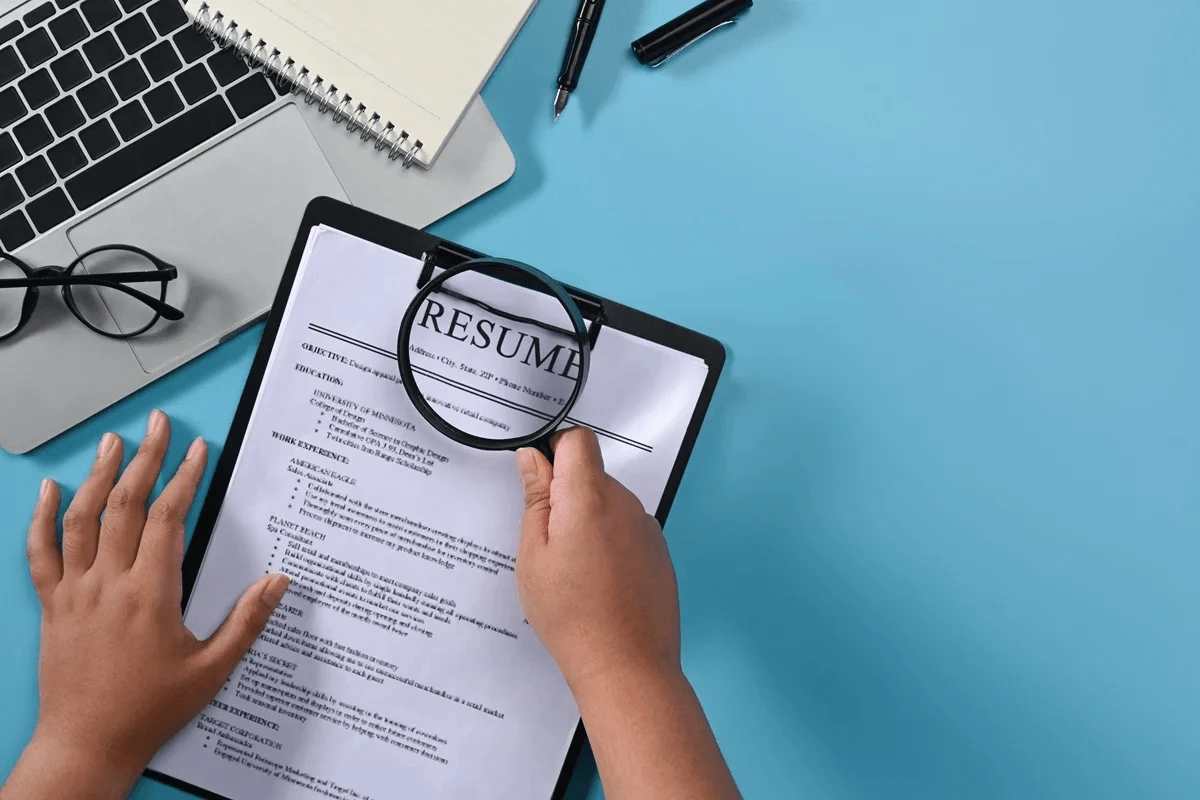Selecting the best font for a resume is more than just a style choice; it’s a crucial element that can have a big influence on your job hunt. Your choice of font affects readability, conveys professionalism, and even impacts how your resume is interpreted by the applicant tracking systems (ATS). Because recruiters only take a few seconds to review each application, choosing the best font for a resume can help your document stand out and ensure that your expertise and qualifications are immediately apparent.
Hiring managers are more likely to see your resume if you choose an ATS-compatible typeface. This blog examines the finest fonts for resumes that strike a mix between professionalism and readability, enhancing the visual attractiveness of your application while still meeting industry requirements. Let’s examine the best typefaces that will enable you to create a professional and captivating
Why Does Your Resume Font Matter?
A lot of job seekers concentrate on improving the content of their resumes. They use a variety of techniques to make their resumes appealing to recruiters, from writing the perfect resume summary to emphasizing their most relevant knowledge and skills. However, they often overlook that enhancing the content alone isn’t sufficient to captivate the hiring manager’s attention; they also need to use the best font for their resume. Why?
Well, beyond being just a matter of personal taste, choosing the best font for a resume is important since it conveys professionalism. It also influences the impression that recruiters will have of your application. And if we dig a little further, the font options are more essential for a number of crucial reasons, including:
First Impressions
A clean and professional font reduces distractions and ensures that your resume looks polished and easy to read. This increases the likelihood of making a positive impression on hiring managers, improving your chances of being considered for the job.
Readability
Most recruiters spend only a few seconds scanning each resume. And opting for a clear font significantly improves your resume’s readability. This will ensure that your qualifications stand out amidst the sea of job hopefuls.
Brand Representation
Choosing the right font for your resume also boosts your professional image and aligns with industry standards, enhancing credibility and trust with your audience or potential employers.
ATS Compatibility
Aside from branding and readability, using the right fonts in your resume can also help you pass the Applicant Tracking Systems. This boosts your chances of advancing in the hiring process, as your resume won’t be overlooked or improperly parsed due to unrecognized or misinterpreted fonts.

Understanding the Font Types
Clarity, professionalism, and readability should always come first when selecting fonts for your resume. But, in order to properly choose a font that will make your resume legible to employers, you must first understand what fonts are acceptable in resume writing and in what type of resume they are best used.
In case you are not acquainted with these font faces, here are the five primary type of fonts that can be used in different kinds of resumes:
1. Sans Serif Fonts
Sans serif fonts, such as Arial, Calibri, and Helvetica, are characterized by their clean lines and lack of decorative strokes at the ends of characters. They exude a modern and straightforward vibe, making them the best font option for ATS.
2. Serif Fonts
Contrary to sans serif fonts, serif fonts feature small decorative flourishes, or “serifs,” at the ends of characters. Classic examples include Times New Roman, Georgia, and Garamond. Serif fonts evoke a traditional and formal tone, making them suitable for conservative industries like law or academia.
3. Script Fonts
Script typefaces mimic handwritten words, adding beauty and flair to your resume. However, they should be utilized only in headers or creative jobs where a personal touch is required.
4. Monospaced Fonts
Monospaced fonts, such as Courier New, allocate the same amount of space for each character. While they’re not commonly used for resumes due to their mechanical appearance, they are suitable for technical fields where code samples are included.
5. Display Fonts
Display fonts are typefaces that are designed primarily for decorative purposes rather than for extended reading. They are typically used for titles, headlines, and other large-scale text elements where the main goal is to capture attention and create a distinctive visual impact.
Best Fonts for Resumes
Now that we’ve explored the different font types, let’s delve into the best font for crafting a standout resume.
- Calibri: Its modern, clean design coupled with excellent readability makes it a popular choice for resumes.
- Arial: Widely available and easy on the eyes, Arial is a safe bet for any profession.
- Helvetica: With its timeless appeal and versatility, Helvetica is favored by many designers for its professional appearance.
- Times New Roman: Despite its ubiquity, Times New Roman remains a classic choice for traditional industries.
- Verdana: Designed for on-screen readability, it’s clean, spacious, and easy on the eyes style makes it a good choice for digital resumes.
- Cambria: A slightly more modern feel compared to Times New Roman, making it a good alternative for those who want a traditional yet updated look for their resume.
- Lato: Its contemporary feel and clean font face make it suitable for a wide range of resume styles.

Ideal Resume Font Sizes
Aside from choosing the best font for a resume, font size is also vital to ensure that your document is visually appealing. Below are some ideal font sizes to consider for different sections of your resume:
Header
Make sure to use font size ranging between 16 and 20 points, preferably in bold, for your name. This ensures that your name stands out prominently at the top of your resume.
Resume Body
For the body of your resume, it is recommended to use a font size ranging from 10 to 12 points. This ensures a polished and professional appearance while allowing ample space for your qualifications and experiences to shine.
Section Titles
In addition to the resume header, the section titles of your resume should also be slightly larger than the body text to help them stand out and clearly delineate different sections of your resume. This makes it easier for hiring managers to navigate your document and quickly find the information they’re looking for.
Expert Advice on Choosing the Best Font for a Resume
To ensure you make a flawless first impression, here are some expert tips to help you select the perfect font for your resume:
1. Consider using a single font for a polished appearance.
As much as possible, try to use a single font throughout your resume. This will help you present a unified and professional appearance. It will also avoid any visual distractions and help recruiters maintain focus on the content of your resume.
2. Ensure readability on both print and screen.
Print your resume to assess its readability. This step ensures that your resume is easily navigable and comprehensible, especially when viewed by potential employers or recruiters in various settings.
3. Make sure the typeface is appropriate for the industry you are targeting.
Different industries may have specific preferences when it comes to fonts. So be sure to research the standard fonts used in your particular field and tailor your choice accordingly. For example, creative industries might appreciate more unique or stylized fonts, while more traditional sectors may prefer classic and easily readable options.
4. Seek feedback from peers or professionals in your industry.
Professionals in your field can offer perspectives on how your font selection aligns with industry norms and whether it effectively enhances the overall presentation of your resume. Their constructive criticism will help you refine your choice and make necessary adjustments for a more impactful resume.

What Kinds of Fonts Should You Avoid?
While font choice is subjective, many typefaces don’t belong in a resume due to their unprofessional appearance. Some of these are:
- Fancy, overly stylized or decorative fonts: Those with excessive decorations, serifs, or fancy patterns might be difficult to read and may show a lack of professionalism. Examples include fonts like Papyrus and Curlz MT.
- Script Fonts: Script fonts mimic handwriting and can be difficult to read, especially in smaller sizes. They also come across as overly decorative and may not convey a sense of professionalism.
- Novelty Fonts: Fonts designed for specific themes or concepts, such as Old English or Western-style fonts, are generally not suitable for resumes. These fonts can be distracting and may not be taken seriously in professional contexts.
Get Noticed with the Best Font for a Resume
Overall, the font you choose for your resume is not a decision to be taken lightly. It serves as a subtle yet impactful representation of your professionalism. By understanding the importance of different typefaces and selecting the best font for a resume, along with heeding our expert advice, you ensure that your resume stands out for all the right reasons.
Still not sure which font to use? Then, hire our experts! At Infotech Resume, we specialize in generating impressive resumes that not only present your content in the appropriate fonts but also ensure proper branding and alignment with your target industry. So don’t wait! Trust our team of professional writers now and let us craft you a compelling resume that sets you apart from the competition. Contact us today!





